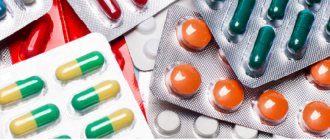When bacteria are treated
The first to suggest the existence of bacteria capable of saving humanity from serious diseases was the French microbiologist and chemist Louis Pasteur . He hypothesized a kind of hierarchy among living microorganisms - and that some might be stronger than others. For 40 years, the scientist searched for options for salvation from those ailments that for many years were considered incurable, and conducted experiments on the types of microbes known to him: he grew them, purified them, and added them to each other. This is how he discovered that the most dangerous anthrax bacteria could die under the influence of other microbes. However, Pasteur did not advance further than this observation. The most offensive thing is that he did not even suspect how close he was to the solution. After all, the “protector” of a person turned out to be something so familiar and familiar to many... mold.
Benefactor of humanity. How Louis Pasteur created the first vaccinations
More details
It was this fungus, which today evokes complex aesthetic feelings among many, that became the subject of discussion between two Russian doctors in the 1860s. Alexey Polotebnov and Vyacheslav Manassein argued whether green mold is a kind of “progenitor” for all fungal formations or not? Alexey advocated the first option; moreover, he was sure that all microorganisms on earth originated from her. Vyacheslav argued that this was not so.
From heated verbal debates, doctors moved on to empirical tests and began two parallel studies. Manassein, observing microorganisms and analyzing their growth and development, discovered that where mold grows... there are no other bacteria. Polotebnov, conducting his own independent tests, discovered the same thing. The only thing is that he grew mold in an aquatic environment, and at the end of the experiment he discovered that the water did not turn yellow and remained clean.
Article on the topic
Opening of a new era. Antibiotics have changed our world beyond recognition
The scientist admitted defeat in the dispute and... put forward a new hypothesis. He decided to try to prepare a bactericidal preparation based on mold - a special emulsion. Polotebnov began using this solution to treat patients - mainly for treating wounds. The result was stunning: patients recovered much faster than before.
Polotebnov did not leave his discovery, as well as all scientific calculations, a secret - he published it and presented it to the public. But these truly revolutionary experiments went unnoticed - official science reacted sluggishly.
Timeline of discoveries
The creation of antibiotics was gradual, using the enormous experience of generations and proven general scientific facts. For antibacterial therapy to be so successful in modern medicine, many scientists “had a hand in this.” Alexander Fleming is officially considered the inventor of antibiotics, but other legendary figures also helped patients. Here's what you need to know:
- 1896 - B. Gozio created mycophenolic acid against anthrax;
- 1899 - R. Emmerich and O. Lowe discovered a local antiseptic based on pyocenase;
- 1928 - A. Fleming discovered an antibiotic;
- 1939 - D. Gerhard received the Nobel Prize in Physiology or Medicine for the antibacterial effect of Prontosil;
- 1939 - N.A. Krasilnikov and A.I. Korenyako became the inventors of the antibiotic mycetin, R. Dubos discovered tyrothricin;
- 1940 - E.B. Chain and G. Flory proved the existence of a stable extract of penicillin;
- 1942 - Z. Vaksman proposed the creation of the medical term “antibiotic”.
About the benefits of open windows
If only Alexey Polotebnov had been more persistent, and official doctors a little less inert, Russia would have been recognized as the birthplace of the invention of antibiotics. But in the end, the development of a new treatment method was suspended for 70 years, until the British Alexander Fleming took up the matter. From his youth, the scientist wanted to find a means that would destroy pathogenic bacteria and save people’s lives. But he made the main discovery of his life by accident.
From the treatment of smallpox to penicillin. Five great medical discoveries
More details
Fleming studied staphylococci, but the biologist had one distinctive feature - he did not like to clean up his desk. Clean and dirty jars could stand mixed together for weeks, and he forgot to close some of them.
One day, a scientist left test tubes with the remains of colonies of grown staphylococci unattended for several days. When he returned to the glass, he saw that they were all overgrown with mold - most likely, the spores had flown in through the open window. Fleming did not throw away the spoiled samples, but with the curiosity of a true scientist, he placed them under a microscope - and was amazed. There was no staphylococcus, only mold and drops of clear liquid remained.
Article on the topic
Doctors are heroes. 5 stories of people who dedicated their lives to medicine
Fleming began experimenting with different types of mold, growing gray and black mold from ordinary green mold and “planting” it with other bacteria - the result was amazing. It was as if she was “fencing off” harmful neighbors from herself and did not allow them to multiply.
He was the first to pay attention to the “moisture” that appears next to the fungal colony, and suggested that the liquid should have literally “killing power.” As a result of long research, the scientist found out that this substance can destroy bacteria, moreover, it does not lose its properties even when diluted with water 20 times!
He called the substance he found penicillin (from the name of the mold Penicillium - lat.).
From that time on, the development and synthesis of antibiotics became the main business of a biologist’s life. He was interested in literally everything: on what day of growth, in what environment, what temperature does the fungus work best. As a result of the tests, it turned out that mold, although extremely dangerous for microorganisms, is harmless to animals. The first person to test the effect of the substance was Fleming's assistant, Stuart Graddock , who suffered from sinusitis. As an experiment, a portion of mold extract was injected into his nose, after which the patient’s condition improved.
Fleming presented the results of his research in 1929 at the London Medical and Scientific Club. Surprisingly, despite the terrible pandemics - just 10 years earlier, the Spanish flu claimed the lives of millions of people - official medicine was not very interested in the discovery. Although Fleming did not have eloquence and, according to contemporaries, was a “quiet, shy person,” he nevertheless took up advertising the drug in the scientific world. The scientist regularly published articles and made reports for several years in which he mentioned his experiments. And in the end, thanks to this persistence, fellow doctors finally paid attention to the new remedy.
Saving mold: the history of the creation of penicillin
More details
What are antibiotics
Many decades have passed since the advent of the first antibiotic, but medical workers around the world and ordinary people are well aware of this discovery. Antibiotics themselves are a separate pharmacological group with synthetic components, the purpose of which is to disrupt the integrity of the membranes of pathogenic pathogens, stop their further activity, quietly remove them from the body, and prevent general intoxication. The first antibiotics and antiseptics appeared in the 40s of the last century, and since then their range has expanded significantly.
Useful properties of mold
Antibiotics, which were produced from mold fungi, help well against the increased activity of pathogenic bacteria. The therapeutic effect of antibacterial drugs in the body is systemic, all thanks to the beneficial properties of mold. The discoverer Fleming managed to isolate penicillin using a laboratory method; the benefits of such a unique composition are presented below:
- green mold suppresses bacteria resistant to other drugs;
- the benefits of mold are obvious in the treatment of typhoid fever;
- mold destroys painful bacteria such as staphylococci and streptococci.
"The strongest survives"
Charles Darwin
Obviously, the simpler the mechanism is, the easier it is to repair it “on the knee” and improve its technical characteristics without spending too much time. Bacteria are very simple devices. When you have only one cell, there is no need to continually disassemble the nucleus and unpack the chromosomes, the genome is not overloaded with many regulatory elements, and all genetic material is used sparingly to maintain only the most necessary life functions, then it is much easier to adapt it to changing conditions. The life of the bacterium is short - 20-30 minutes. But if nothing interferes with it, it usually ends in division. In other words, every half hour there will be two instead of one cell, and by the end of the day about seventy generations will have changed. Therefore, from an evolutionary point of view, time flows faster for bacteria than for us, which means natural selection also works faster. No matter how powerful an antibiotic is, there is always a chance that among its billion victims there will be at least one who will survive thanks to an accidentally acquired mutation. And having managed to survive, it will receive an exclusive opportunity to reproduce and pass on this ability to survive to daughter cells, and those, in turn, to their own. The descendants of surviving bacteria will sooner or later form a population that is completely immune to the old antibiotic - exactly according to Darwin [13].
Figure 3. Medicines form the basis of modern medicine
NutritionFacts.org
Higher organisms that are under constant pressure adapt in a similar way. Crop-damaging insects develop resistance to pesticides, but it takes them much longer. Bacteria, not only reproduce quickly, but also know how to “neighborly” exchange genes directly with each other (this is called “horizontal gene transfer”). All this only further accelerates their adaptation to new conditions.
How does it all work?
The mechanisms of action of modern antibiotics on the target cell can be very different [7]. Representatives of the beta-lactam group (which includes penicillin) inhibit the synthesis of peptidoglycan, which forms the basis of the bacterial cell wall. Without it, osmotic pressure inside the cell destroys the plasma membrane, and the cell bursts like a balloon. Unfortunately, such antibiotics only suppress the growth of new peptidoglycan chains, but do not destroy already formed ones. Therefore, they can stop cell division and their active growth, but nothing can be done with bacteria that are in the dormant stage, or with the so-called L-forms, which have no cell wall at all, but have retained the ability to develop. Sulfonamides prefer to attack the intracellular metabolism of the victim, for example, blocking the chemical reactions necessary for the synthesis of folic acid. The bacterium does not know how to absorb vitamins from the outside, so the inability to synthesize them on its own is fatal for it. Some antibiotics (aminocoumarins and fluoroquinol compounds) disable bacterial DNA gyrase, an enzyme that unwinds the supercoiled chromosome for its replication. Thus, the cell is deprived of the ability to copy its DNA and reproduce. Another way to kill a bacterium is to disrupt the synthesis of its proteins. Tetracycline antibiotics work according to this scheme: they attach to the small subunit of the bacterial ribosome, an organelle responsible for building proteins on an RNA matrix [8].
This list is not complete; there are other groups of antibiotics. One way or another, their target is almost always a protein, be it a bacterial enzyme, metabolite, cytoskeletal element, proton pump, or something else [9]. Even to simply get inside a cell, an antibiotic must first pass through its cell wall and membrane through channels that also consist of proteins (porins) [10], [11]. And there are two important points here. Firstly, there are a monstrously large number of proteins, and they are very diverse, hence the variety of antibiotics. Each of them affects “its own” protein - and is harmless to all microorganisms that do not have such a protein. But what’s much worse is that proteins are easier and faster than other compounds (carbohydrates, phospholipids, etc.) and are subject to adaptive changes. This is precisely what lies at the heart of a large-scale problem, which has not yet manifested itself in full force, but is already looming on the horizon and in the near future threatens to turn into a serious disaster. We are talking about the ability of bacteria to quickly—in a matter of months—develop resistance to any antibiotic [12].
Figure 2. Interaction between methicillin-resistant Staphylococcus aureus (yellow) and human leukocyte. The MRSA252 strain is one of the most common causes of hospital-acquired infections in the US and UK.
National Institute of Allergy and Infectious Diseases
“Fifty times out of a hundred, even the best of them don’t know how to treat you.”
Agatha Christie
The trick is that the infection may actually be caused by evil bacteria, but it may also be caused by something else - such as archaea, fungi, or even protists. And against all this splendor, antibiotics are unlikely to be effective. With viruses it’s even worse. You will not have a single chance to cure any flu or acute respiratory viral infection with an antibiotic. Unlike a bacterium - a cellular structure that has its own genome, protein-synthesizing apparatus, metabolic enzymes, etc. - a virus has only a genome of all of the above. In fact, it is just a DNA or RNA molecule packaged in a protein capsid, which replicates inside the infected host cell, using its own resource. A sort of saboteur who entered someone else's factory with his own drawings and stamped copies of himself on the factory machine. Well, really, don’t break your own equipment in order to stop the intruder!
According to an article recently published in the Journal of the American Medical Association [4], in the United States, out of ten patients who go to the doctor with complaints of a sore throat, six are prescribed antibiotics. Penicillin remains the drug of choice due to its low price and good tolerability. Meanwhile, it is effective only when the infection is caused by group A streptococcus, and this is only one case out of ten [5]. It turns out that the doctor who prescribes you an antibiotic for a sore throat is most often either unsure of the diagnosis or simply playing it safe.
Moreover, even if the cause of an infection is a bacteria, this is not a guarantee that a particular antibiotic will work on it. It all depends on what species or even strain you are dealing with. On the one hand, this is good, because a healthy body always has its own microflora, which lives with it in a successful symbiosis and which is better not to touch. On the other hand, it is for this same reason that there are no universal drugs that would help equally well for everything at once. In order not to act at random, before prescribing treatment, they usually culture a sample taken from the patient and test it one by one for resistance to a whole pool of antibiotics, after which the most suitable one is selected. Unfortunately, this procedure requires at least several days and the presence of a microbiological laboratory on hand, and the infectious process often proceeds much more rapidly. And it may happen that when the test results come back... it will be too late to treat.
Of course, researchers are looking for other ways to diagnose infections in the early stages, for example, Alan Jarmusch from Purdue University proposed using mass spectral analysis for these purposes [6]. Great hopes are also placed on DNA diagnostics of pathogens, although the widespread use of these methods in practice is still a long way off.
Advantages and disadvantages
We can say unequivocally that the invention of modern antibiotics was necessary and allowed us to save the lives of many people. However, like any invention, these drugs have positive and negative sides.
The positive aspect of creating antibiotics:
- diseases that were previously considered fatal are many times less likely to end in death;
- when these drugs were invented, people's life expectancy increased (in some countries and regions by 2-3 times);
- newborns and infants die six times less often;
- the mortality rate of women after childbirth decreased by 8 times;
- the number of epidemics and the number of people affected by them have decreased.
After the first antibiotic drug was discovered, the negative side of this discovery also became known. At the time of the creation of a medicine based on penicillin, there were bacteria that were resistant to it. Therefore, scientists had to create several other types of medicines. However, microorganisms gradually developed resistance to the “aggressor”. Because of this, there is a need to create more and more new drugs that will be able to destroy mutated pathogens. Thus, new types of antibiotics and new types of bacteria that are resistant to them appear every year. Some researchers say that currently about one tenth of infectious disease pathogens are resistant to antibacterial drugs.
Competition "bio/mol/text"-2014
This article was submitted to the competition of popular scientific works “bio/mol/text”-2014 in the “Best Review” category.
The main sponsor of the competition is the visionary. The competition was supported by RVC OJSC.
The sponsor of the Bioinformatics nomination is the Institute of Bioinformatics. The audience award was sponsored by Helicon. The Foundation for Support of Advanced Biotechnologies also presents its prize.
Through natural selection, we have developed the ability to resist; we do not yield to any bacteria without a stubborn struggle. Herbert Wells. War of the Worlds






